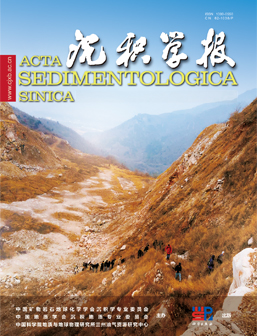Diagenesis Differences and Genesis under the Constraint of Tight Sandstone Lithofacies Combination:in Chang 8 Member of Yanchang Formation in Zhijing-Ansai Area
doi: 10.14027/j.issn.1000-0550.2023.096
- Received Date: 2023-06-02
- Available Online: 2023-10-23
-
Key words:
- Chang 8 tight sandstone /
- lithofacies assemblages /
- difference and genesis of diagenesis /
- Zhijing-Ansai area
Abstract: [Objective] Different reservoir diagenesis has a significant effect on reservoir heterogeneity, and limits the ability to predict the presence of oil and gas in tight sandstone reservoirs. [Methods] In the study area, the constraints of lithofacies combinations causing differences in diagenesis in Chang 8 tight sandstone in the Zhijing-Ansai area were clarified by observation and identification from thin sections, cathodoluminescence (CL), scanning electron microscopy (SEM), C and O isotope analysis, and laser ablation. [Results and discussion] The reservoir sandstone comprises three lithofacies combinations: type I is siltstone or fine sandstone interbedded with argillaceous rock; type II is fine-to-medium sandstone; and type III is fine sandstone/siltstone/argillaceous rock. The fine particles of the siltstone facies have high mica content, and the rock is strongly compacted. The reservoir contains a large amount of near-argillaceous calcite cement that was developed early. The mudstone is rich in pore water with high concentrations of calcium ions and bicarbonate ions. When the mudstone overlying and underlying the reservoir sandstone is deeply buried, overcompaction causes the muddy and clayey sediments to discharge mineralized water into the sandstone, affecting its diagenesis. The supersaturated calcium carbonate thus forms a dense carbonate cement at the sandstone-mudstone interface. The calcite cement developed in the type II sandstone facies combination was formed later: this is mainly due to the later evolution of organic matter influenced by the decarboxylation of organic matter in the source rocks. The conversion of clay minerals in source rocks occurs when the pore water containing calcium ions undergoes lateral advection along highly permeable pathways, entering the reservoir and providing a material source for the development of calcite in the thick sandstone. Quartz cement is usually developed within the type I lithofacies and is mainly provided by the dissolution of feldspars and the transformation of clay minerals which are the source of silica. The dissolution process usually develops in regions of the rock with relatively coarse particle size and low plastic particle content, thus providing good fluid migration channels. [Conclusions] The differences and origin of diagenesis in the study area are clarified, providing an important basis for further research on the origin of reservoir heterogeneity.
| Citation: | Diagenesis Differences and Genesis under the Constraint of Tight Sandstone Lithofacies Combination:in Chang 8 Member of Yanchang Formation in Zhijing-Ansai Area[J]. Acta Sedimentologica Sinica. doi: 10.14027/j.issn.1000-0550.2023.096 |






 DownLoad:
DownLoad: